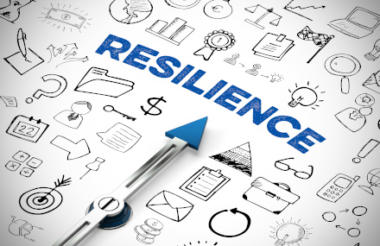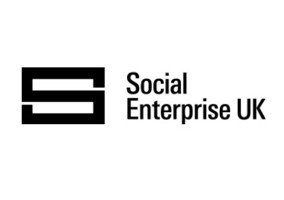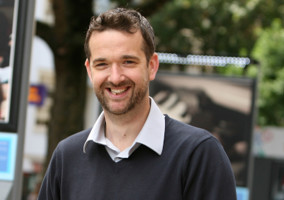In her recent speech at the Charity Commission’s annual public meeting, chief executive Helen Stephenson used the word resilience twice. She praised the resilience of the sector, particularly in the context of the pandemic, and she talked about the attributes of charities that will be required in the immediate and longer-term future – not only in terms of post-pandemic recovery but when faced with major challenges such as climate change, post-Brexit developments, and economic uncertainty. It will be crucial to identify the hallmarks of a resilient charity in order to meet these challenges.
Resilience is a broad term and can mean different things to different people. Beth Clarke is programme manager of CAF’s Resilience Programme Pilot, which for the last four years has supported 10 small charities to become more resilient. For her, resilience is having time and space to step away from the day-to-day in order to look at the things that aren’t working and that hold you back. “It is also about the things that may be working fine, but could be so much better if you had the opportunity to reflect and consider different ways of working.”
BRIC (Building Resilience in Communities) is a Lincolnshire-based charity providing support for children and their families. Tracey Good, CEO, says that resilience is about more than simply having a positive cash flow. “It’s about having the people and the partners around us who have the skills and the attitude to be able to deal with now, while also responding to changes that are coming; to be able to look into the future and to ensure that we’re able to always make decisions based on the children and families that we support.”
Sarah Atkinson took on the role as chief executive of the Social Mobility Foundation (SMF) in January 2020. The charity works with young people from low socio-economic backgrounds to help them access opportunities in education and the workplace. “As a staff team, we talked the other day about resilience and what it meant. In the context of a volatile, uncertain, complex, ambiguous world, we came up with this structure where resilience is about vision, understanding, clarity and agility. Eyes on the prize, knowing what’s happening, being as clear as we can be about what our response to that is, and being agile and flexible.”
Harriet Stranks is director of grants at Lloyds Bank Foundation (LBF), which started providing organisational resilience support for more than 1,000 of the charities it funds, in 2014. “For me, organisational resilience comes from personal resilience; building trusted relationships and networks and making sure that you’re thinking about the wellbeing of yourselves and your staff teams. This can then lead to the confidence and the strength to be able to work through tough times.”
Shane Ward is chief executive of the West Bromwich African Caribbean Resource Centre (WBACRC). “Our primary purpose is serving the Black African Caribbean diaspora community. Part of resiliency in that context is about defining yourself. Over the last few years there’s been this term BAME [Black, Asian, minority ethnic], which is an invented term not owned by the Black community but imposed on it. Part of our resilience has been actually to say this, and more narrowly to identify who our target beneficiaries are. It is also about sharing information, building skills and creating networks.”
He continues: “I think what we have done well as an organisation is to quickly identify areas where we could support local communities during the pandemic right from the start. We had a centre-based day service and a hospital befriending scheme, both of which ceased. Instead, we decided to do some outreach support, so we quickly reengaged those staff to work in an outreach capacity and that worked really well for us.”
Atkinson says there were some similarities for SMF. “In January 2020, we had 2,000 young people on board and had promised them a programme of support for the year. Normally it is delivered entirely face-to-face, so we had to work out how to pivot, and we did it completely differently online.”
She adds that the fact she was new to her role turned out to be an advantage, even though it didn’t feel like it at the time. “I didn’t know very much about what we normally did yet. That actually helped because it meant I could really assist the team to focus on the mission and the outcomes and wasn’t particularly bogged down with the knowledge and understanding of how they were normally achieved.”
Good remembers that when the pandemic hit, BRIC had just been through a restructure and rebrand as part of CAF Resilience, so in some ways it was a new organisation even though it had been around for a long time. “Lincolnshire is hugely rural so we had already been through a process of establishing a completely remote staff structure. One of the things that really helped us was that the IT infrastructure was in place, so we could respond very quickly to the crisis. This helped us to be able to turn our support for the families and children, from what previously would have been home visiting or session-based activities, to being online.
“One of the other things we’d done was to go through a process of thinking about, as an organisation, exactly who we are and what we stand for, who we are here for, and who our beneficiaries are. Over the years, we had possibly tried to be all things to all people, probably in pursuance of funding. But the work that we’ve done has really made it very clear that we are here for children and their families, so that is where we focused our efforts during the pandemic.”
Gatwick Detainees Welfare Group (GDWG) is a charity based in Crawley that supports immigrants at two detention centres. Anna Pincus, director, recalls that, like many other charities in the pandemic, GDWG had to completely flip its services. “We were a visitors’ group and we couldn’t visit. I think what made it successful was the fact that the people making the policy or changing policy were people who had frontline experience. The beauty of a small charity is that the connection between frontline work and the policymakers is very, very close. There isn’t a huge hierarchy or bureaucracy to work through.”
Clarke says that she was struck by a charity from the Resilience programme that she spoke to a few months after the pandemic began, which said it had been doing pretty well, all things considered, because it had taken some time over the previous few years to really focus on what matters and to have tough, defining conversations. It had also decided to build a culture of not allowing people to get too comfortable, as it had realised that nothing ever stays the same.
“They spent a lot of time making sure that people were equipped to work in cross functional teams. You can’t stay in your own silo and only do the thing that you like doing. They had people taking on tasks outside of their own role to support somebody else in order to better understand how to do that role. So when the pandemic hit, staff responded so differently to how they would have done a couple of years before where they were much more used to being in their corner and doing their thing.
“Any organisation that takes the time to look at continuous improvement and iterative change is likely to be better set up for the bad times when they come because staff are more ready to roll with it and are more willing to face the challenge.”
Flexible funding
Several of the panellists praised the flexible approach taken by funders to support them during the crisis, saying this definitely shored up their ability to keep going. Stranks says this was a positive experience for the funding sector too.
“It was a complete removal of funder power and that step would have taken us a very long time under normal circumstances. Because of the pandemic, we moved at pace and have kept an awful lot of that practice now. Trusting charities to do what they do best and just providing scaffolding that can help them is really important.”
Identifying strengths and weaknesses
Good stresses that it is important to be very clear about strategy and having a very simple process that says “this is what we aim to do, this is what we’ve done, this is the impact, and this is what we intend to do again or for the first time going forward”. She also advises engaging with “critical friends” who can be honest about your organisation’s strengths and weaknesses, because “we don’t know what we don’t know. Sometimes we’re trundling along thinking we’re doing a good job, until somebody says ‘have you thought about doing it like this?’”
Pincus adds that those critical friends must include service users, and that their lived experience should be “embedded at every level of the organisation to make sure that the way they see the world is being reflected in decision-making”.
One of the things WBACRC did as part of the CAF Resilience programme was to undertake a comprehensive SWOT analysis, as well as utilising a theory of change and a futurology study into the emerging needs of its community.
“We identified areas that we wanted to develop, but we needed some support. For example, we didn’t have a comprehensive fundraising strategy,” says Ward. “We didn’t know how we compared with similar types of organisations across the country, so CAF did some benchmarking exercises. It was quite eye-opening because when you are in the thick of the day-to-day you don’t realise how well you are doing or how badly. Being able to recognise that in comparison with other organisations you are not doing so badly actually boosts your confidence.”
Clarke says a major benefit of resilience funding is that it affords a lot of flexibility to support organisations in new ways as they learn about their own strengths and weaknesses during the process – especially if they are surprised by unexpected findings along the way. “Resilience funding enables the charity to get to and address the root causes.”
LBF’s regional managers each have a caseload of about 50 to 60 charities that they work with. Explains Stranks: “They try to take that charity through a conversation, so they look at mission, vision, values, people and finances, and try to help the charity think about what their priorities and areas of weakness might be. Very often charities focus on where they feel they could improve their services and we help them reflect back on their capacity and what’s achievable because most charities will sign up to do more stuff than they can achieve. It has to be realistic so we’re not burning people out and make sure that they’re looking after themselves and their teams as well.”
Finding good trustees
Ward says that one of the things that prompted WBACRC to apply for the CAF programme was that it had identified an issue around governance. “We had a board where the youngest trustee was in their early 60s, with the oldest in their mid-80s. We realised that we needed to get some younger trustees on board. We managed to get two who are in their late-20s/early-30s. You need a vision for younger people in terms of longevity and keeping the organisation going and making it relevant. Those younger trustees are bringing new perspectives, which will get younger people through the door.”
Pincus says that while GDWG hasn’t had any problem recruiting trustees, it recognised that there had been a tendency for people to recruit in their own image. “We are also keen to develop a younger profile of trustee. We do have lived experience on our board and it’s not tokenistic as they’re leading on safeguarding.”
Good says that BRIC tried open recruitment, but this proved difficult. So instead it identified people in the community, drew up a hit list and asked them. This was very successful in terms of getting the quality of trustee that the charity was looking for.
Clarke tells of another charity on the CAF programme that also wanted a change on its board, but because its finances were a bit precarious the people it approached to become trustees weren’t keen.
She says the charity was up-front about the issues conveyed the opportunity in a more positive way to attract new people. “Don’t say ‘do you want to come and join us, oh and by the way, we’re having some difficulties with money’ but instead say ‘do you want to help us and be part of a turnaround, as we think you have the skills to do that?’. By putting it in a different light they appointed four or five new trustees with some fantastic skills.”
Atkinson says that her board is largely comprised of businesspeople, which helped enormously when the pandemic struck in early 2020. “Like a lot of CEOs, I had to grab the finances and say ‘Ok, there are scenarios which don’t look good’. Our trustees weren’t afraid of that, they knew how to respond and the kind of things to do. But I know chief executives whose boards panicked at that point and their own resilience wasn’t there. It was really difficult for the chief executives who were propping up their boards and trying to reassure them and their staff. We hadn’t thought that such a situation was what we were recruiting our board for, but it turned out to be a real strength.”
Changing nature of work
Atkinson is one of many CEOs grappling with trying to plan hybrid working for staff and hybrid programme delivery. “Some of the things that we offer students we’re going to keep online because engagement, reach and consistency across the UK has been better. Some things will be face to face, because we know that the quality of outcomes around networking and confidence building have dropped. The tricky thing is trying to align the right kind of hybrid for delivery and outcome for beneficiaries, and for staff wellbeing. The conclusion we’ve come to is that there will be efficiencies to gain from this but that’s going to take a while. It’s going to cost us more and be harder to do things hybrid before it starts to become easier and more efficient. But we’ve just decided we’re going to have to suck that up.
“It is tricky where you’ve got staff who want to work from home more than maybe their direct reports do. It is about thinking through your responsibilities as a manager to your colleagues, as well as your own preferences. Coming out of the pandemic is much harder than going in was.”
Ward says that WBACRC staff are now back in the offices and are re-establishing services as they were previously. However, there have been changes to previous procedures. “We have given some responsibility to other members of staff. Before, only a couple of them would have keys to the building to open and lock up. Now this is shared about. This gives people the flexibility to come in for half a day and then go back and have some Zoom meetings without having to worry about locking up. That’s given people a lot more confidence and they are feeling a lot more valued that they have been trusted with the keys to the building.”
Stranks says she has noticed that some charities which are trying to adapt to hybrid working and services are suffering because of an enormous rise in demand. “There’s a breadth versus depth problem where they’ve got lots and lots of people coming through the door, and they can’t support all of their needs so waiting lists are going up. There are also questions around the quality of interactions when people are receiving services online, and whether or not there is the same impact as with face to face.”
Good says the pandemic ushered in some positive developments at BRIC around remote delivery of services, some of which will probably be retained into the future. But she added: “It has also embedded for us the fact that there are times when we need to be in the homes of children and families to really be able to understand exactly what’s going on for them.”
Clarke raises the difficulty of spotting when a colleague is overwhelmed. “It’s easy to see someone’s body language in an office and to just quickly say ‘oh, are you alright?’ When people work at home, you don’t spot things in the same way.”
Looking ahead
Good predicts that the future economic picture is going to remain pretty bleak. “The challenge is going to be not falling into the trap of chasing the funding but sticking to our beliefs and our objectives. Collaborations and coalitions with other organisations and other sectors is what is going to get us through… we need to invest time in building partnerships.”
Pincus says GDWG knows it has to be “visionary” if it is going to offer hope to refugee and migrant communities, especially in the face of climate change and the current polarised state of politics. “We are trying to develop empathy and tell stories of what’s real to counter that. But because the future’s looking so bleak, the challenge is to not only keep your community inspired but also to be realistic by giving them short-term goals to work towards.”
SMF has been reflecting on how to move from crisis response to strategic intent. Atkinson states: “There is something quite polarising about the combination of significantly heightened public awareness of inequality and appetite for a fair society at the same time that economic and social divisions are getting bigger.
We need to show leadership and engage in that conversation about the way forward on fairness and equality against the backdrop of the culture wars debate.”
Clarke concludes: “Working together is what makes a difference, whatever the next crisis might be, or whatever the circumstances are going forward. There will always be people that need help, there will always be great organisations that want to do that, and there will always be funders that want to put money into the best ways of achieving it. A lot of the things that we’ve talked about are the ingredients for enabling that.”
Ian Allsop is a freelance journalist
With thanks to CAF for their support with this feature
Related articles












